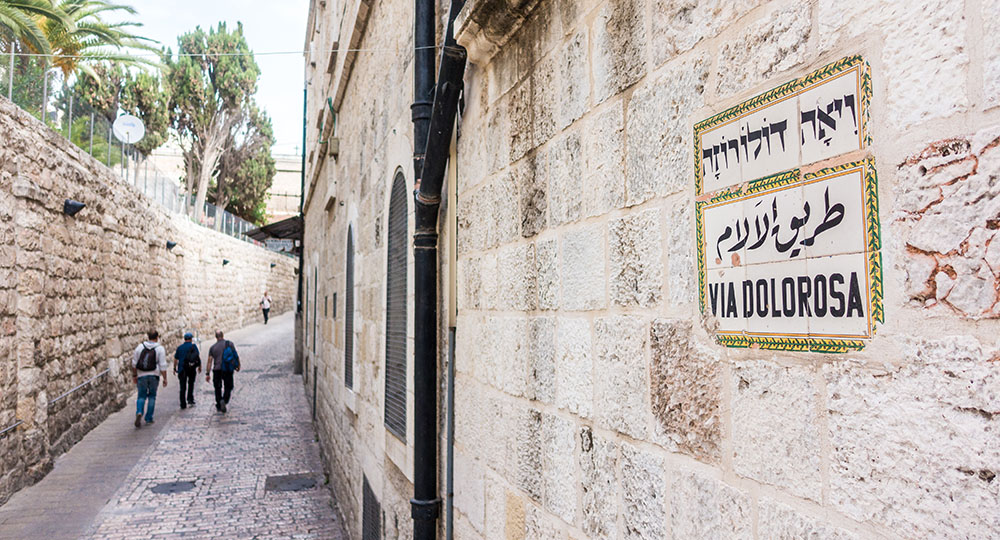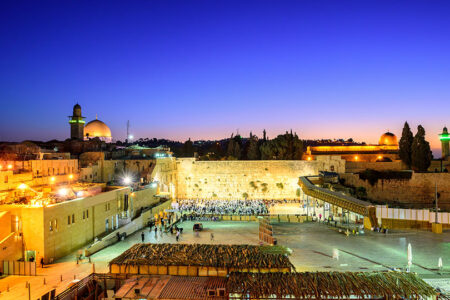Via Dolorosa
The traditional route Jesus traveled to His crucifixion, known in Latin as the Via Dolorosa (Way of Sorrow), is debated. We know Jesus appeared before the Roman prefect Pontius Pilate. The prefect’s residence was known as the praetorium, which medieval Christian tradition places at a Roman military installation, the Antonia Fortress, situated just outside the northwest corner of the Temple Mount. The apostle Paul stood on its steps when he gave his defense to the angry Jewish crowd below (Acts 21:37, 40).
The Antonia Fortress no longer exists, but the narrow street near there became associated with Jesus’ path to Golgotha. This Via Dolorosa has been retraced by thousands of Christian pilgrims for centuries.
Most modern scholars, however, do not believe Pilate’s residence was the Fortress. Roman administrators enjoyed their luxury, so staying at a spartan military installation would not have been their first choice. Instead, Pilate probably stayed at King Herod’s former palace in the Upper City section of Jerusalem, south of today’s Jaffa Gate.
This palace contained gardens, canals, and colonnades, as well as a barracks for soldiers. In fact, farther south, along the outside wall, we can see the remains of steps that led to a gate into Herod’s palace, probably near the barracks. Shimon Gibson, an Israeli archaeologist, makes a plausible case that behind this gate was a paved courtyard and the location of Jesus’ tribunal before Pilate.1
After Jesus was condemned and mocked, Roman soldiers led the Lord about a half mile to His place of execution. From Herod’s palace, they walked northeast and through the Gennath (Garden) Gate in the northern section of the city wall (not today’s Old City wall). Then they took Jesus to the place of crucifixion, where He “suffered outside the gate” (Heb. 13:12).
We don’t know the exact spot of Jesus’ crucifixion or resurrection. However, in my opinion, the archaeological, historical, and traditional evidence is stronger for a location near the present-day Church of the Holy Sepulchre. Admittedly, it’s difficult to contemplate the significance of Christ’s death and resurrection amid the church’s gaudy interior, let alone the bustle of tourists. Nevertheless, this well could be where the promised Messiah, the Lamb of God, took upon Himself the sin of the world, yours and mine, and then rose from the dead three days later to give eternal life to all who believe in Him.
ENDNOTE
-
- Shimon Gibson, The Final Days of Jesus: The Archaeological Evidence (New York, NY: HarperOne, 2009), 104–106.
Photo: Adobe Stock









Since many believe that the Church of the Holy Sepulchre is really the place where Jesus was buried, could have both the crucifixion and the burial have occurred there in the same location?
I believe the accounts of Matthew, Mark and John. Jesus died at Golgotha which is the place of the skull as Luke says in the nkj or kJ. In latin “Calvary” also means place of the skull. In Jerusalem a hill with a skull is where the Arabs have a bus station near the the Garden tomb as John 20 and 21 say and where many evangelicals believe as this goes with the word of God.